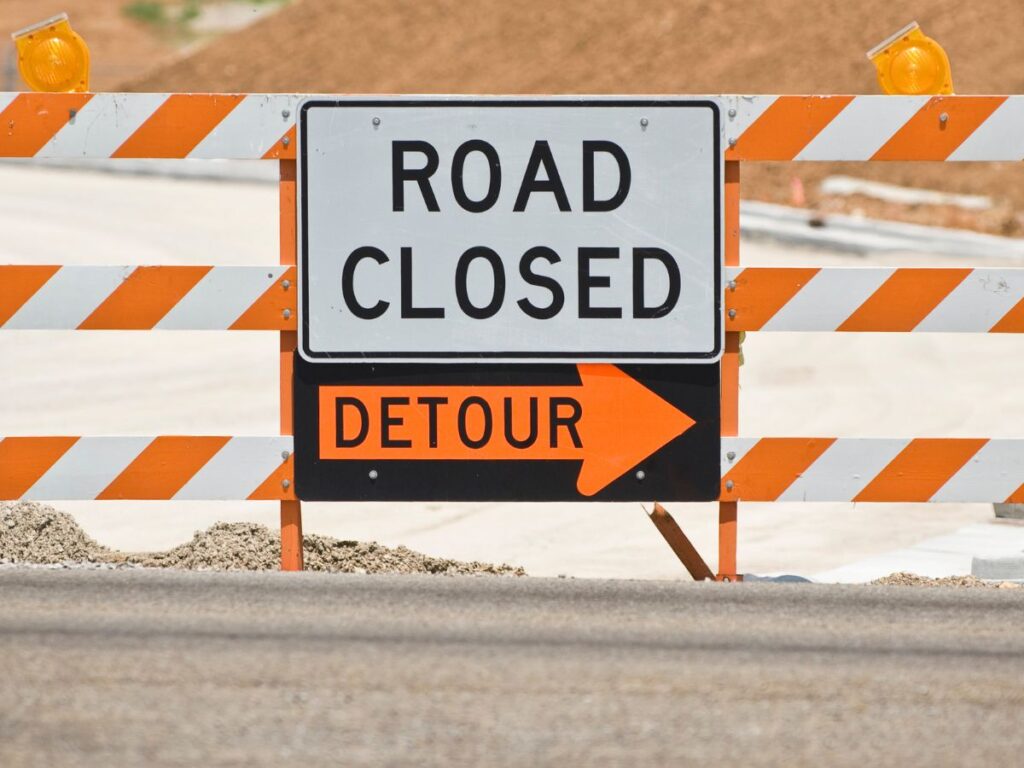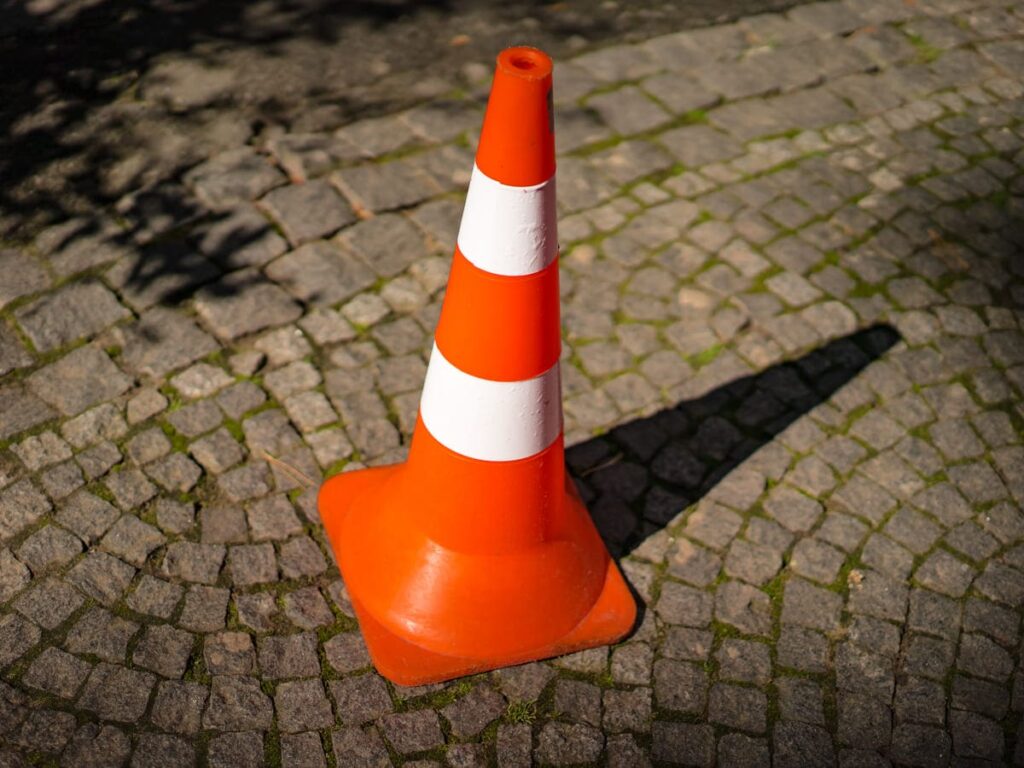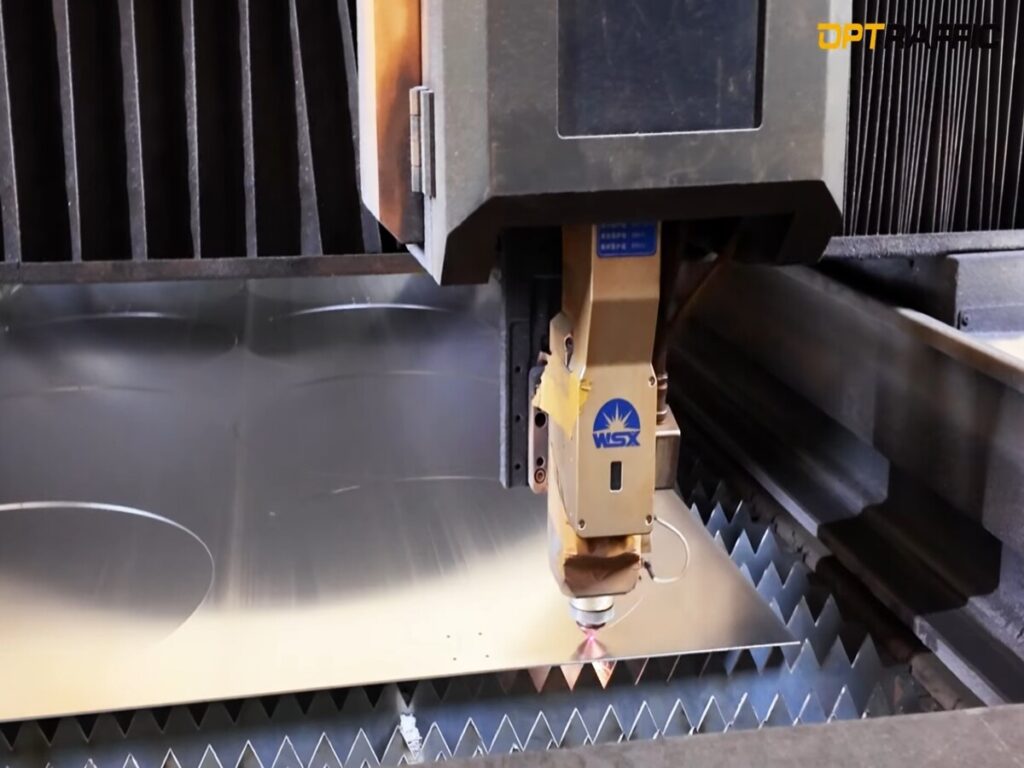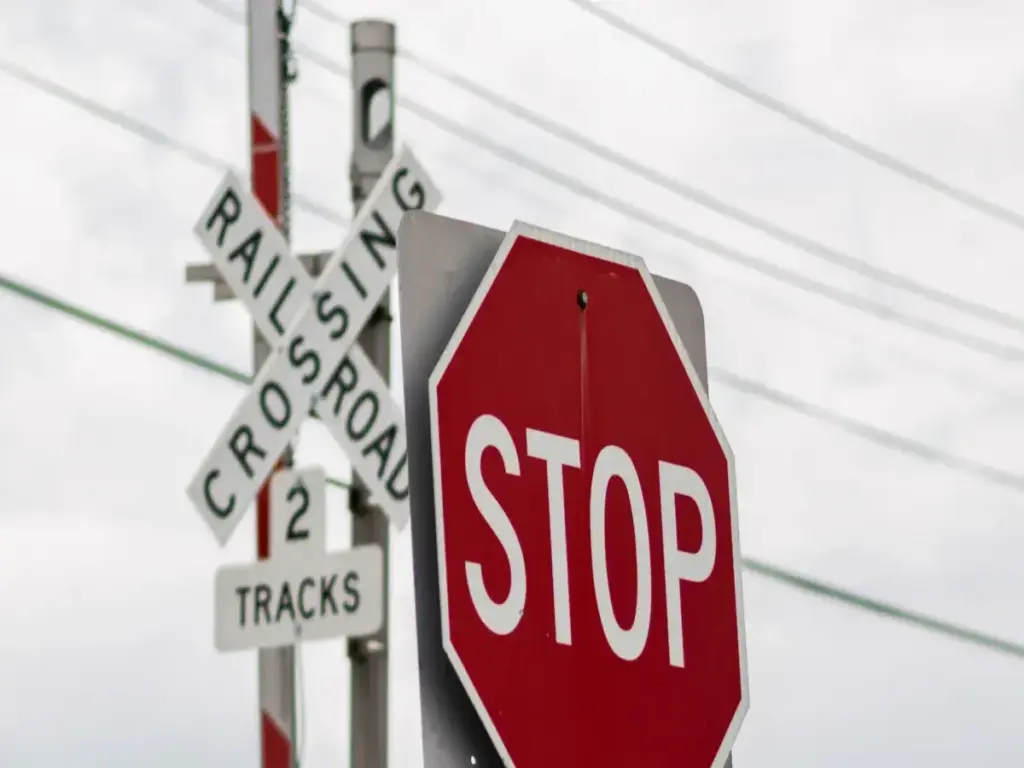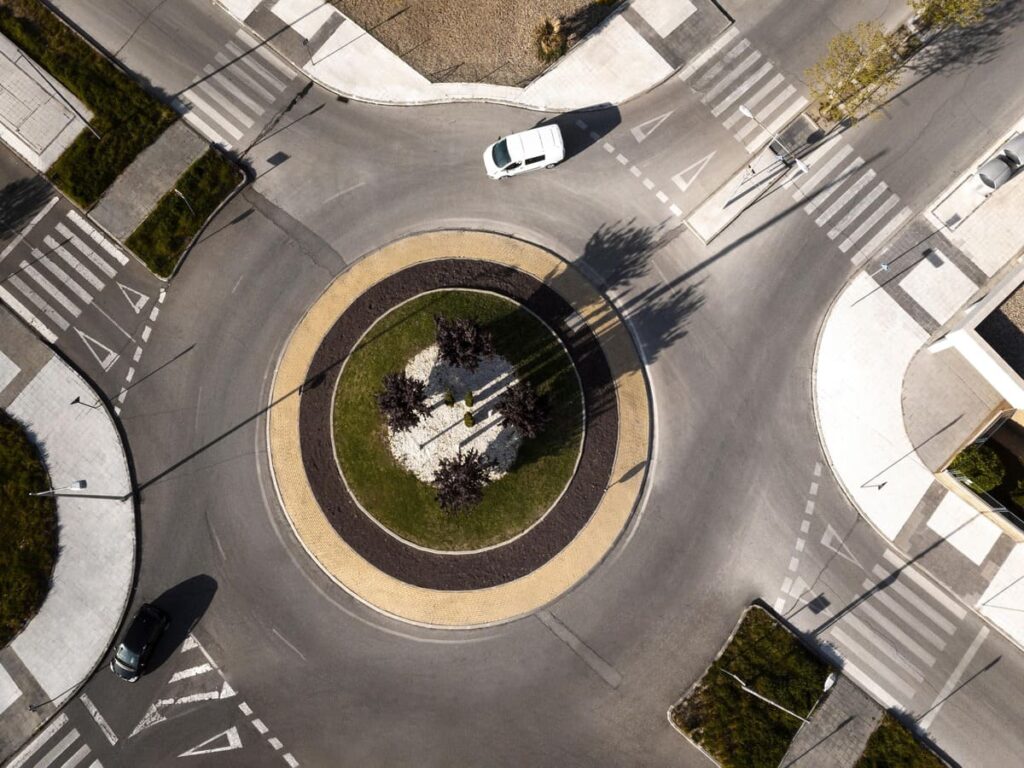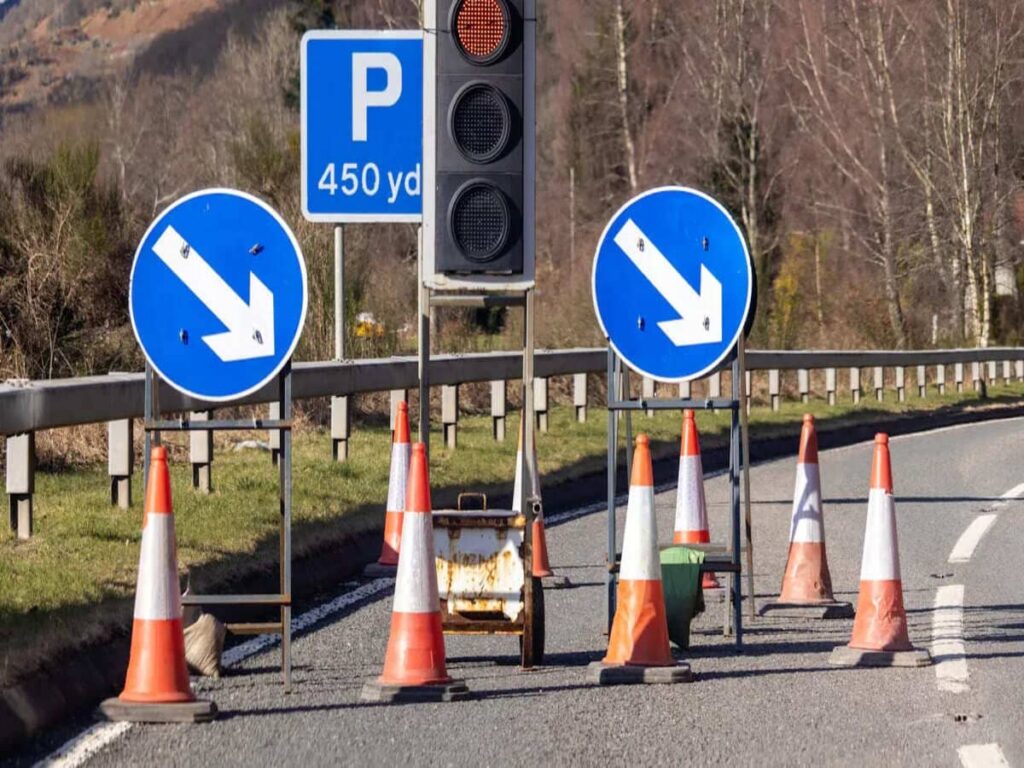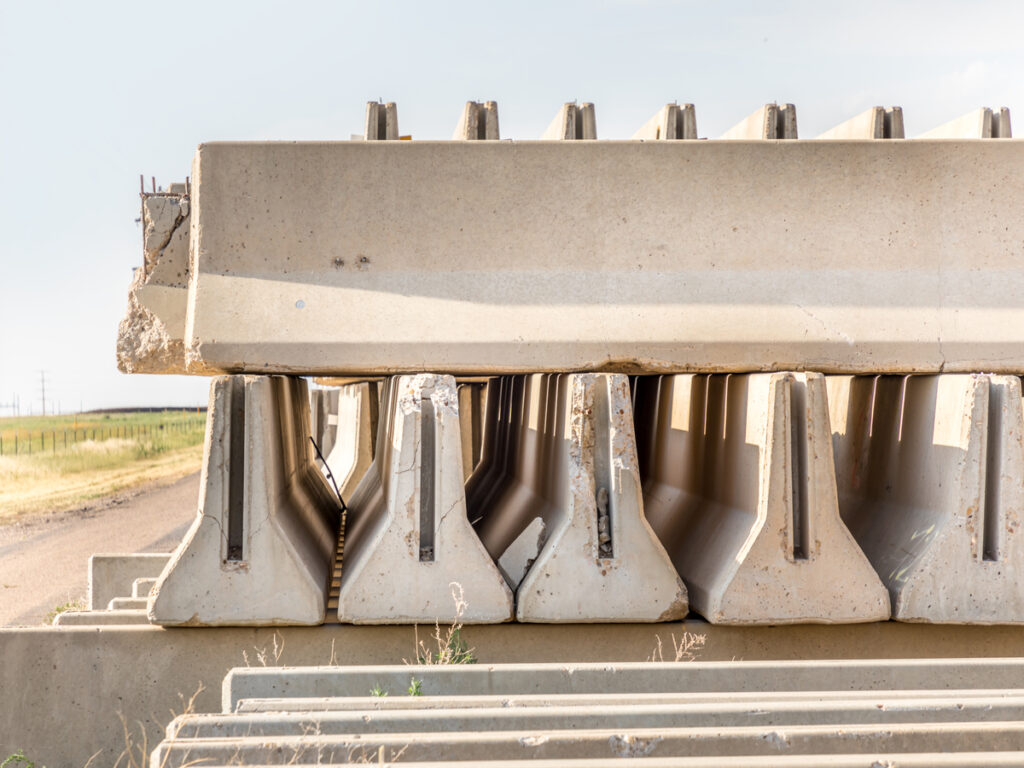
Lorsque vous conduisez sur des routes très fréquentées ou à proximité des zones de construction, Vous pourriez voir de fortes barrières de sécurité routière sur les côtés. Ces barrières de sécurité sont conçues pour réduire les accidents et garder la circulation en sécurité. Ils aident en absorbant ou en redirigeant les forces de crash, sauver des vies et réduire les dégâts.
Un type de barrière de trafic, appelés barrières de jersey, fonctionne particulièrement bien. Leur design simple et leur ténacité les rendent idéaux pour empêcher les voitures de traverser les voies, trafic de guidage, et protéger les travailleurs. Ces barrières de sécurité routière sont très importantes car leur force et leur forme peuvent changer la façon dont les accidents se produisent, Rendre les routes plus sûres pour tout le monde.
Principaux à retenir
- Les barrières en jersey sont importantes pour assurer la sécurité des routes. Ils empêchent les voitures de passer à la circulation venant en sens inverse.
- Ces obstacles à la sécurité de la circulation assurent la sécurité des travailleurs de la construction en les séparant des voitures.
- Les barrières en jersey sont simples à installer et à retirer, Ils fonctionnent donc bien pour une utilisation à court terme ou à long terme.
- Leur conception difficile prend l'impact de l'accident, réduire les dommages et les dommages dans les accidents.
- L'utilisation des barrières de maillot aide le trafic à mieux se déplacer et maintient les gens plus en sécurité, en particulier dans les villes bondées et les zones de travail.
Qu'est-ce qu'une barrière de jersey?
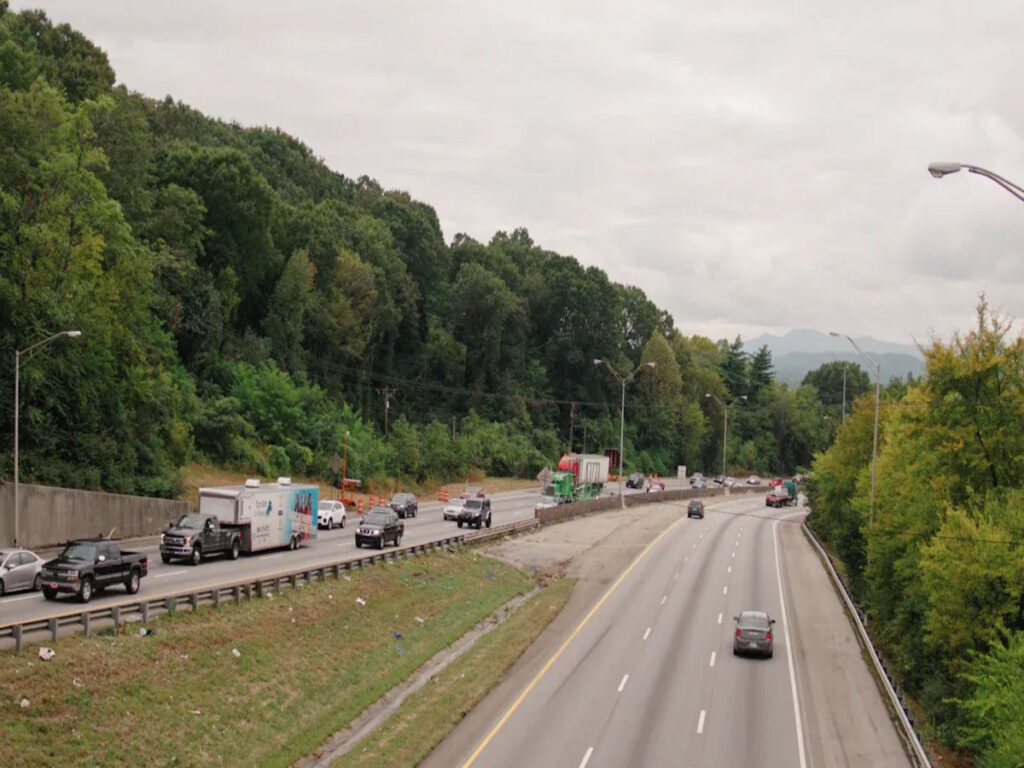
Définition et but
UN Barrière de maillot est une structure de sécurité faite pour améliorer la sécurité routière. Il arrête les accidents et aide à contrôler le trafic. Ces barrières sont généralement en béton ou en plastique. Ils ont un fond large et un haut étroit. Leur travail principal est de diviser les voies et d'arrêter les accidents de front. Ils gardent également des voitures dans leurs voies appropriées. Vous pouvez les trouver sur les autoroutes, Près des zones de construction, Et dans les quartiers de ville animés.
- Empêche les collisions frontales: Ces barrières agissent comme des diviseurs forts. Ils empêchent les voitures de traverser la mauvaise voie.
- Protège les travailleurs de la construction: Ils créent un espace sûr entre les travailleurs et les voitures en mouvement.
- Guides et contrôles le trafic Flux: Ils aident les conducteurs pendant les détours, changements de voie, ou urgences.
Le Barrière de maillot La conception absorbe l'énergie du crash en fonction de la vitesse. À basse vitesse, Les voitures peuvent rebondir avec peu de dégâts. À des vitesses moyennes, Les voitures sont endommagées, Mais les gens à l'intérieur restent plus en sécurité. À grande vitesse, Les voitures font face à de lourds dégâts, et des blessures peuvent arriver. La conception en forme F baisse les chances que les petites voitures se retournent. Les murs verticaux n'absorbent pas bien l'énergie et peuvent causer plus de blessures.
Origine et histoire
Barrières en jersey ont été fabriqués pour la première fois dans les années 1950 par le Département de l'autoroute de l'État du New Jersey. Ils ont été créés pour rendre les routes plus sûres en arrêtant des accidents de front. D'abord, Ils ont été utilisés pour séparer les voies sur les autoroutes. Plus tard, La conception s'est améliorée avec la forme F, qui aide à rediriger les voitures et à réduire les rollovers.
Ces barrières sont désormais courantes sur les autoroutes et les autoroutes. La plupart sont sur 32 pouces de haut, Mais certains peuvent être aussi grands que 57 pouces. Certaines barrières sont permanentes, tandis que d'autres sont portables. Les portables sont utilisés dans les zones de construction ou pour des événements spéciaux.
Noms alternatifs et utilisation globale
Barrières en jersey avoir des noms et des conceptions différents dans d'autres pays. Cela montre à quel point ils sont utiles dans le monde. Aux États-Unis, Ils sont appelés “Barrières en jersey.” D'autres endroits utilisent différents noms et styles pour répondre à leurs besoins. Voici un tableau montrant certains types:
| Type de barrière | Description |
|---|---|
| Barrière de maillot | Une forme de barrière en béton réalisée par le Département de l'autoroute du New Jersey State. |
| Barrière de pente constante | Une barrière avec une conception de pente régulière. |
| Barrière de pas en béton | Une barrière avec des étapes dans sa conception. |
| Barrière de forme F | Une barrière avec une conception en forme de F pour de nombreuses utilisations. |
Autour du monde, Barrières en jersey sont importants pour la sécurité routière. Pays comme le Canada, Australie, Et le Royaume-Uni les utilise. Ils fonctionnent bien dans de nombreux endroits, des rues de la ville aux autoroutes rapides.
Caractéristiques de conception des barrières de Jersey
Conception structurelle
Les barrières en jersey ont une forme spéciale pour guider les voitures en toute sécurité. Ils sont larges en bas et étroits en haut. Cette conception les maintient stables et aide à empêcher les voitures de se retourner. La forme F est idéale pour protéger les petites voitures contre les roulements.
Les ingénieurs testent ces obstacles pour s'assurer qu'ils sont en sécurité. Ils utilisent des tests de crash et des modèles informatiques pour vérifier leur force. Ces tests incluent:
- Tests à grande vitesse pour voir comment les barrières redirigent les voitures.
- Respecter les règles de sécurité comme Nchrp 350 ou des normes de purée.
- Tests de stress, comme TB32 (1,500 kg à 110 km / h) et TB41 (10,000 kg à 70 km / h), Pour vérifier leurs limites.
| Aspect | Description |
|---|---|
| Focus de l'étude | Comment les barrières se connectent aux bords du pont |
| Méthodologie | Rules de conception de ponts Aashto LRFD |
| Sujets clés | Comment les barrières échouent, manipuler les charges, et besoin de soutien |
| Importance | Les conceptions fortes gardent des barrières stables sous pression |
| Application | Leçons des tests de collision pour de meilleures barrières en béton |
Ces fonctionnalités rendent les barrières en jersey utiles pour les besoins de sécurité à court et à long terme.
Dimensions et variations
Les barrières en jersey sont disponibles en différentes tailles pour divers emplois de sécurité. La plupart sont 32 pouces de haut, Mais certains sont à la hauteur 57 pouces pour une protection supplémentaire. Chaque pièce est généralement 10 à 20 pieds de long, Selon l'endroit où il est utilisé.
La pente et la forme des barrières peuvent également varier. La forme F est courante, Mais certaines zones utilisent des conceptions à pente constante. Ces changements aident les barrières à fonctionner bien dans différents endroits. Barrières portables, qui sont plus légers et plus courts, sont parfaits pour des utilisations temporaires comme les chantiers de construction ou les événements.
Matériaux utilisés
Les matériaux dans les barrières de Jersey les rendent forts et durables. Les barrières permanentes sont souvent faites de béton armé. Ce matériel est très fort, avec une résistance à la compression de 3 000 à 4 000 psi. Il peut gérer de gros accidents sans se casser.
Pour les barrières temporaires, Le plastique est souvent utilisé. Ces barrières de circulation sont creuses et peuvent être remplies d'eau ou de sable pour le poids. Les barrières en plastique sont faciles à déplacer et à installer, mais fonctionnent mieux dans les zones ou les lieux à basse vitesse avec moins de trafic.
Avec des conceptions intelligentes, les bonnes tailles, et des matériaux forts, Les barrières en jersey aident à protéger les routes dans de nombreuses situations.
Fixe VS. Options portables
Lors du choix Barrières en jersey, Il y a deux types principaux: fixe et portable. Chaque type est fait pour des utilisations spécifiques et a ses propres avantages. Connaître la différence vous aide à choisir le bon.
Barrières de maillots fixes
Les barrières de circulation fixes restent en un seul endroit en permanence. Ils sont faits de béton armé fort, ce qui les rend très durables. Ces barrières sont solidement attachées au sol, les rendre excellents pour une utilisation à long terme dans les zones animées.
- Caractéristiques principales des barrières fixes:
- Construit pour gérer de forts accidents.
- Besoin d'experts pour les installer correctement.
- Meilleur pour les endroits à trafic intense ou aux voitures rapides.
Vous verrez souvent des barrières fixes sur les autoroutes, ponts, et les routes importantes. Leur conception difficile signifie qu'ils durent longtemps avec peu d'entretien.
Conseil: Les barrières fixes fonctionnent mieux dans les endroits où la sécurité est critique, Comme des séparateurs routiers ou des barrages routiers permanents.
Barrières de maillots portables
Des barrières portables sont faites pour une utilisation à court terme. Ils sont souvent en plastique léger, Alors ils sont faciles à déplacer. Ces barrières peuvent être remplies d'eau ou de sable pour les rendre plus lourdes et plus stables.
- Caractéristiques principales des barrières portables:
- Léger et simple à déplacer.
- Rapide à installer et à éliminer.
- Idéal pour les projets ou événements temporaires.
Vous trouverez des barrières portables dans les zones de construction, espaces événementiels, ou des zones avec l'évolution des modèles de trafic. Their flexibility makes them useful for many situations.
Note: Portable traffic barriers are ideal for temporary setups, especially where traffic needs to be redirected or controlled.
Comparing Fixed and Portable Barriers
Voici une comparaison simple pour vous aider à décider:
| Fonctionnalité | Fixed Barriers | Portable Barriers |
|---|---|---|
| Matériel | Béton armé | Plastique (can be filled with water/sand) |
| Installation | Permanent, needs anchoring | Temporaire, Facile à installer |
| Meilleure utilisation | Autoroutes, ponts, permanent spots | Chantiers de construction, événements, détours |
| Mobilité | Cannot be moved | Facile à déplacer |
| Durabilité | Très fort et durable | Strong but less durable than fixed |
Both fixed and portable Barrières en jersey sont importants pour la sécurité routière. Fixed ones offer lasting protection, while portable ones are flexible for short-term needs. By understanding their uses, you can choose the best option for any situation.
Main Purposes of Jersey Barriers in Road Safety
Stopping Cars from Crossing Lanes
Jersey barriers help stop cars from crossing into other lanes. Their strong design works as a divider to prevent crashes. Quand une voiture frappe la barrière, Sa forme en pente repousse la voiture dans sa voie. Cela réduit les chances d'accidents sérieux. Les autoroutes ont besoin de ces barrières car les vitesses rapides rendent les accidents plus dangereux.
Vous verrez ces obstacles dans les zones animées ou les virages aigus. Ils absorbent l'énergie des accidents pour protéger les personnes à l'intérieur des voitures. En gardant des voitures dans leurs voies, Les barrières en jersey rendent les routes plus sûres et réduisent les accidents mortels.
Garder les zones de travail en sécurité
Les zones de travail peuvent être dangereuses, Mais les barrières en jersey aident à les garder en sécurité. Ces barrières créent un mur entre les travailleurs et les voitures en mouvement. Cela empêche les voitures d'entrer dans les zones de travail et protège les travailleurs et l'équipement.
Les rapports montrent à quel point ces barrières fonctionnent. Par exemple:
- En Californie, Les barrières mobiles gagnent du temps pendant la configuration et la suppression.
- Sur les grands projets, Les barrières réduisent les coûts et raccourcissent les délais.
| Année | Décès de zone de travail | Zone de travail s'écrase | Économies de coûts des barrières |
|---|---|---|---|
| 2022 | 891 | N / A | $3.8- 8,9 milliards de dollars par an |
| 2021 | N / A | 105,000 | N / A |
| N / A | N / A | N / A | $38.9 milliards annuellement |
Ces chiffres montrent comment les barrières protègent les zones de travail et économisent de l'argent. L'utilisation de barrières de maillots rend les zones de travail plus sûres pour tout le monde.
Guider le trafic en toute sécurité
Les barrières en jersey aident à guider les voitures dans des zones avec des détours ou des changements. Leur conception montre aux conducteurs où aller, Empêcher la confusion et les accidents. Vous les verrez dans les villes, zones de construction, ou événements spéciaux.
Ces barrières de trafic sont faciles à repérer, Même par mauvais temps comme la pluie ou le brouillard. Ils aident les voitures à se déplacer bien à travers des configurations de trafic temporaires ou permanentes. En guidant le trafic, Les barrières en jersey rendent les routes plus sûres et réduisent les confitures.
Empêcher le tout-terrain de virer
Les voitures peuvent parfois quitter la route par accident. Cela se produit souvent près des virages aigus, collines escarpées, ou des endroits dangereux comme des fossés ou des arbres. Barrières en jersey Aidez à empêcher les voitures de quitter la route dans des zones dangereuses.
La forme en pente de Barrières en jersey repousse les voitures sur la route. Le fond large absorbe les collisions, tandis que le haut étroit guide les voitures en toute sécurité. Cette conception réduit les chances de rouler et protège les conducteurs. Sur les ponts ou les routes de montagne, Ces barrières agissent comme des boucliers, empêcher les voitures de tomber des bords.
Conseil: Tu verras Barrières en jersey Près des gouttes abruptes ou de l'eau. Ils aident à prévenir les accidents graves si un conducteur perd le contrôle.
Par mauvais temps, comme le brouillard ou la pluie, Barrières en jersey sont utiles. Les conducteurs peuvent avoir du mal à rester sur la route. Ces barrières créent des limites claires pour guider les voitures et les garder en sécurité. Les bandes réfléchissantes les rendent faciles à voir la nuit ou dans les tempêtes.
- Pourquoi les barrières en jersey aident à empêcher le tout-terrain de virer:
- Éloignez les conducteurs des dangers en bordure de route.
- Empêcher les voitures de quitter la route.
- Aide les conducteurs par temps à faible visibilité.
En empêchant les voitures de virer, Barrières en jersey sauver des vies et protéger la propriété. Leur placement rend les routes plus sûres, Même dans des conditions de conduite difficiles.
Avantages de l'utilisation des barrières de jersey
Résistance à l'impact élevé
Des barrières en jersey sont faites pour gérer de forts accidents. Leur forme en pente aide à repousser les voitures en toute sécurité lors des accidents. Cette conception réduit les risques de blessures graves et de dégâts de voiture. Ils travaillent bien sur les autoroutes et dans les villes pour protéger les conducteurs et les piétons.
Les barrières en jersey permanentes utilisent le béton armé pour absorber l'énergie de l'accident. Ce matériel les maintient forts même après de nombreux accidents. Pour une utilisation temporaire, Les barrières en plastique remplies d'eau ou de sable sont bonnes pour les zones de circulation plus lentes. Ces caractéristiques rendent les barrières en jersey très importantes pour la sécurité routière.
Durabilité et faible entretien
Les barrières en jersey sont difficiles et durent longtemps. Studies show that using geopolymer concrete makes them 9%–15% stronger than regular concrete. Tests like ultrasonic pulse checks prove their strength and quality. They also resist damage from acids and harsh weather, making them reliable in tough conditions.
These traffic barriers need little care after being installed. Même par mauvais temps, they stay strong and don’t need frequent repairs. This makes them a smart and cost-saving choice for long-term use.
Note: Jersey barriers are a great investment because they last for years and need little upkeep.
Easy Deployment
Jersey barriers are simple to set up and take down. Their design allows one person to handle them without special tools. This makes them perfect for quick use in emergencies or temporary projects.
| Deployment Benefit | Description |
|---|---|
| One-person setup | Aucune aide supplémentaire nécessaire à l'installation. |
| Retirer une personne | Facile à éliminer après utilisation. |
| Installation rapide | Peut être installé en quelques minutes. |
| Pas d'outils spéciaux | Ne nécessite pas d'équipement supplémentaire. |
| Transport simple | Léger et facile à déplacer. |
| Stockage compact | Prend peu de place lorsqu'il est stocké. |
| Longueur réglable | Peut être redimensionné au besoin. |
Ces fonctionnalités font des barrières Jersey un choix intelligent pour un contrôle de la circulation flexible et rapide. Leur utilisation facile aide à gérer le trafic en toute sécurité et efficacement.
Visibilité par mauvais temps
Les barrières en jersey sont faciles à voir, Même par mauvais temps. Leur conception aide les conducteurs à les remarquer pendant la pluie, brouillard, ou neige. Cela permet de rester plus facile sur la route et d'éviter les accidents.
La peinture ou les bandes réfléchissantes les distinguent la nuit. Ces fonctionnalités sont utiles sur les autoroutes ou dans les zones de construction avec peu d'éclairage. Les couleurs vives comme l'orange ou le jaune améliorent également la visibilité de jour.
Conseil: Choose safety barriers with reflective surfaces or bright colors. These features grab attention and improve safety.
Some road safety barriers have built-in lights or solar markers. These additions make them even more visible in heavy fog or storms. Engineers create these barriers to guide drivers safely when visibility is poor.
- Main Visibility Features:
- Reflective strips for nighttime use.
- Bright colors for better daytime visibility.
- Built-in lights for extreme weather guidance.
En améliorant la visibilité, Jersey barriers help drivers stay safe in tough conditions.
Works Well with Other Safety Systems
Jersey barriers fit perfectly with other road safety tools. They work with guardrails, coussins de crash, and signs to improve protection. Ensemble, these systems make roads safer for everyone.
Par exemple, barriers connect with steel guardrails to cover more highway areas. Les coussins de crash aux extrémités de la barrière absorbent l'impact, Réduire les dégâts dans les accidents. Ces combinaisons améliorent la sécurité sans perdre leur efficacité.
Note: L'utilisation de barrières de maillot avec d'autres outils crée une protection plus forte contre les accidents.
Vous les verrez également avec des cônes et des panneaux dans les zones de construction. Cette configuration aide à guider les conducteurs à travers les détours et les changements de voie. Les ingénieurs conçoivent ces systèmes pour travailler ensemble pour un flux de trafic plus fluide.
| Système | Comment ça marche avec les barrières de Jersey |
|---|---|
| Garde-corps | Ajoute une protection supplémentaire le long des bords de la route. |
| Coussins de crash | Adoucire l'impact aux extrémités de la barrière. |
| Panneaux de circulation | Donne des instructions claires près des barrières. |
| Cônes / marqueurs | Aide à guider les conducteurs dans les configurations temporaires. |
En combinant des barrières de jersey avec d'autres outils, Les routes deviennent plus sûres et plus organisées. Cette flexibilité en fait un élément clé des plans de sécurité routière modernes.
Barrières de jersey vs. Autres barrières de sécurité routière
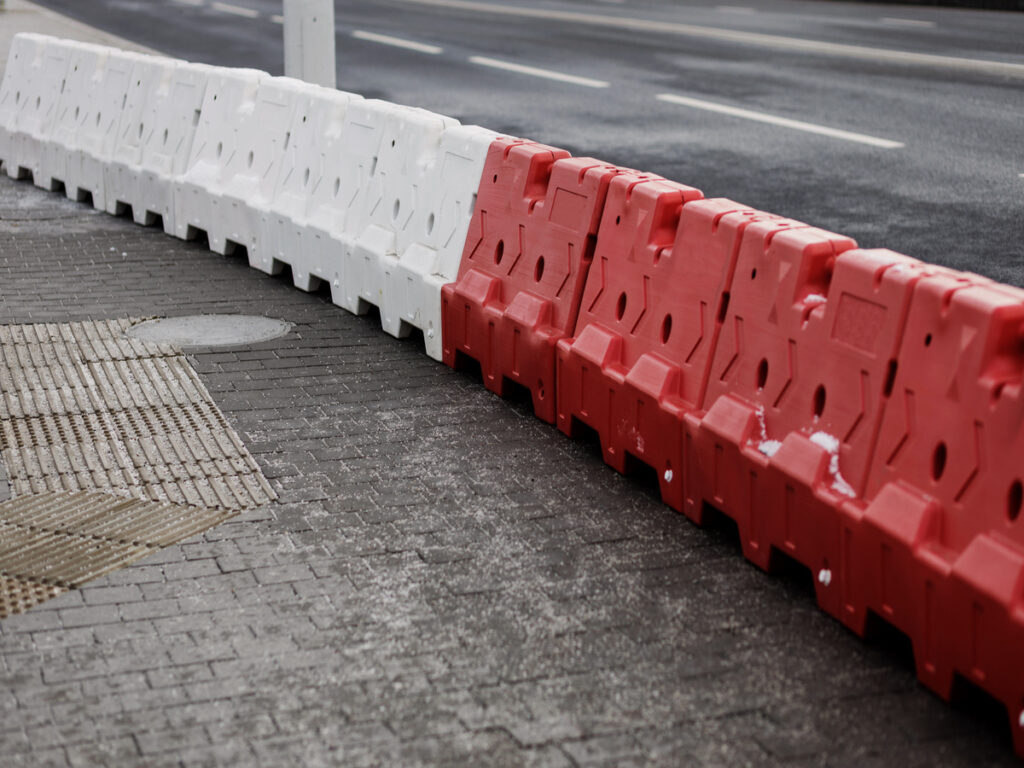
Comparaison des garde-corps en acier
Garde-corps en acier et les barrières en jersey améliorent la sécurité routière. Les garde-corps en acier utilisent du métal flexible pour absorber les accidents et rediriger les voitures. Les barrières en jersey sont solides et en pente pour guider les voitures en toute sécurité.
Les garde-corps en acier fonctionnent mieux sur les autoroutes très fréquentées. Ils sont meilleurs lorsque le trafic est terminé 40,000 voitures quotidiennes. Les barrières en jersey sont solides mais peuvent ne pas correspondre aux garde-corps dans ces zones. Cependant, Les barrières en jersey sont idéales pour diviser les voies ou protéger les zones de construction.
| Type de barrière | Meilleure utilisation | Seuil de volume de trafic |
|---|---|---|
| Garde-corps en acier | Autoroutes à fort trafic | Sur 40,000 véhicules |
| Barrières en jersey | Diviseurs de voie | N / A |
Les garde-corps en acier sont idéaux pour la circulation rapide. Les barrières en jersey sont meilleures pour les zones nécessitant du dur, Diviseurs à l'épreuve.
Comparaison des barrières plastiques remplies d'eau
Les barrières en plastique remplies d'eau sont légères et portables. Ils peuvent être remplis d'eau ou de sable pour la stabilité. These barriers are often used in temporary setups like construction zones.
Jersey barriers are stronger and handle crashes better than plastic barriers. Their concrete design makes them good for permanent use. Plastic barriers are easier to move but less effective in high-speed areas. They work well in places with slower traffic.
Pour les besoins à court terme, plastic barriers are a good choice. For long-term safety, Jersey barriers are more reliable and durable.
Comparing Crash Cushions
Crash cushions and Jersey barriers both reduce accident damage. Crash cushions absorb impact at specific spots, like barrier ends. Jersey barriers guide cars back onto the road and prevent rollovers.
Crash cushions work well with Jersey barriers. Adding cushions to barrier ends softens crashes and lowers damage. Tandis que les coussins de crash protègent certaines zones, Les barrières en jersey couvrent des étirements de route plus longs.
| Type de barrière | Comparaison du niveau de sécurité |
|---|---|
| Barrières en forme de pas | De meilleurs niveaux de sécurité sur les routes à double transport. |
| Barrières en forme de NJ | Des niveaux de sécurité plus faibles que les barriers pas. |
| Barrières préfabris | Niveaux de sécurité similaires aux barriers NJ sur les autoroutes. |
| Garde-corps en acier | Meilleurs niveaux de sécurité pour la circulation 40,000 véhicules. |
Les coussins de collision sont parfaits pour des places de crash fréquentes. Les barrières en jersey offrent une sécurité régulière à travers les autoroutes. L'utilisation des deux améliore la protection globale de la route.
Différentes utilisations des barrières de trafic
Les barrières de trafic sont faites pour des emplois spécifiques. Connaître leurs utilisations vous aide à choisir le bon. Barrières en jersey sont très utiles, Mais les comparer à d'autres obstacles montre leurs avantages particuliers.
À long terme vs. Utilisation à court terme
Barrières en jersey fonctionnent bien pour les besoins à long terme et à court terme. Les permanents sont utilisés sur les autoroutes et les ponts pour une sécurité durable. Ils sont faits de béton fort pour gérer les accidents et le mauvais temps. Temporaires, Souvent en plastique, sont parfaits pour la construction ou les événements. Ils sont légers et faciles à déplacer, Parfait pour les configurations à court terme.
City VS. Campagne
Dans les villes, Barrières en jersey aider à contrôler le trafic et à protéger les personnes. Leur petite taille s'adapte à des endroits serrés comme les rues ou les intersections. À la campagne, Ils empêchent les voitures de quitter les routes près des falaises ou des rivières. Leur conception difficile les protège par endroits avec moins d'entretien.
Rapide vs. Zones de trafic lent
Routes rapides, comme les autoroutes, Besoin d'obstacles qui peuvent gérer de gros accidents. Barrières en jersey ont des formes en pente pour guider les voitures en toute sécurité dans des accidents. Pour les zones plus lentes, Les barrières en plastique remplies d'eau sont suffisantes. Ceux-ci sont faciles à configurer et à supprimer, Bon pour les parkings ou les détours.
Conseil: Utiliser Barrières en jersey pour fort, sécurité durable. Pour les zones à court terme ou lentes, Essayez des barrières en plastique plus légères.
Travailler avec d'autres outils de sécurité
Barrières en jersey bien fonctionner avec d'autres articles de sécurité. Sur les autoroutes, Ils s'associent à des garde-corps pour une protection supplémentaire. Dans les zones de travail, Ils vont avec des cônes et des panneaux pour guider les conducteurs. Cela en fait un excellent choix pour de nombreuses configurations de trafic.
En apprenant ces différences, Vous pouvez choisir la meilleure barrière pour vos besoins. Que ce soit pour une sécurité à long terme ou un contrôle à court terme, Barrières en jersey sont une option fiable.
Utilisations courantes des barrières de maillot
Diviser les voies d'autoroute
Les barrières en jersey sont souvent placées au milieu des autoroutes. Ils gardent les voitures dans des voies séparées pour éviter les accidents de front. Leur conception solide empêche les véhicules de traverser les voies opposées. La forme en pente repousse les voitures dans leurs voies pendant les accidents.
Les autoroutes ont un trafic rapide, rendre la sécurité importante. Les barrières en jersey aident à guider les voitures pendant les changements de voie ou les détours. Les conducteurs peuvent les voir clairement, Même par mauvais temps, Merci à leur visibilité.
Protéger les zones de construction
Dans les zones de construction, Les barrières en jersey gardent les travailleurs à l'abri des voitures. Ils bloquent les zones où l'équipement et les travailleurs sont actifs. Cela empêche les véhicules de pénétrer dans les espaces restreints et de nuire.
Les barrières en plastique sont excellentes pour les projets de construction temporaires. Ils sont légers et faciles à déplacer. Les travailleurs peuvent les remplir d'eau ou de sable pour les rendre stables. Ces barrières sont rapides à installer, les rendre idéaux pour une utilisation à court terme.
Les barrières en jersey aident également à diriger le trafic près des chantiers de construction. Leurs couleurs vives et leurs bandes réfléchissantes les rendent faciles à voir. Cela réduit la confusion et maintient le trafic en douceur.
Garder les bords de la route
Les barrières en jersey protègent les conducteurs contre les dangers comme les gouttes abruptes ou les fossés. Ils sont placés le long des routes avec des virages nets ou des courbes risquées. Leur conception en pente garde les voitures sur la route et empêche les rollovers.
Ces barrières sont particulièrement utiles sur les ponts et les routes de montagne. Ils agissent comme des boucliers, empêcher les voitures de tomber des bords. Par mauvais temps, Les bandes réfléchissantes les rendent visibles la nuit ou pendant les tempêtes.
En gardant les bords de la route, Les barrières en jersey rendent la conduite plus sûre et abaissent les chances d'accidents graves.
Zones de sécurité urbaine
Les villes ont souvent des problèmes de trafic délicats. Barrières en jersey aider à rendre les zones plus sûres pour les marcheurs, motard, et les conducteurs. Vous les trouverez aux intersections, espaces événementiels, et les rues animées. Leur forte construction protège les gens et continue de bien se déplacer.
Comment les barrières de jersey améliorent la sécurité urbaine
- Protéger les piétons: Ces barrières empêchent les voitures de pénétrer dans les trottoirs. Ils gardent les marcheurs en sécurité dans des endroits bondés.
- Guide des cyclistes: Les barrières créent des pistes cyclables pour éloigner les cyclistes des voitures.
- Contrôler le trafic: Les barrières guident les voitures pendant les détours ou les urgences. Les couleurs vives et les bandes réfléchissantes les rendent faciles à voir.
Conseil: Utilisez des obstacles portables pour des événements tels que des défilés ou des festivals. Ils sont légers et rapides à installer, Parfait pour la sécurité de la ville à court terme.
Exemples d'applications urbaines
| Emplacement | But | Type de barrière |
|---|---|---|
| Intersections occupées | Gardez les marcheurs à l'abri des voitures | Barrières en béton fixe |
| Événements publics | Gérer les foules et le trafic | Barrières en plastique portables |
| Voies cyclables | Faire des chemins sûrs pour les cyclistes | Barrières fixes ou portables |
Barrières en jersey Rendre les villes plus sûres en réduisant les risques et en organisant le trafic. Ils fonctionnent bien pour les configurations permanentes et temporaires.
Périmètres de haute sécurité
Barrières en jersey sont essentiels pour protéger les endroits importants. Vous les verrez près des aéroports, bâtiments du gouvernement, et bases militaires. Leur conception difficile et leur capacité absorbant les accidents les rendent idéales pour les zones de sécurité.
Caractéristiques clés de la sécurité
- Résistance à l'impact: Les barrières en béton empêchent les voitures d'entrer dans les zones restreintes.
- Visibilité: Les couleurs vives et les bandes réfléchissantes les rendent faciles à remarquer, Même la nuit.
- Conception personnalisable: Les barrières peuvent être ajustées pour la hauteur ou la longueur pour répondre aux besoins de sécurité.
Note: Pour une sécurité à court terme, Des barrières portables remplies d'eau ou de sable fonctionnent bien.
Utilisations courantes
| Emplacement | But | Type de barrière |
|---|---|---|
| Aéroports | Bloquer les voitures de la saisie des zones restreintes | Barrières en béton fixe |
| Bâtiments du gouvernement | Arrêter les véhicules de se rapprocher trop | Barrières fixes ou portables |
| Bases militaires | Protéger contre les menaces | Barrières en béton armé |
Barrières en jersey Améliorer la sécurité en créant de fortes limites. Leur flexibilité leur permet d'adapter différents endroits, garder les zones à haut risque sécurisées.
Les barrières en jersey sont importantes pour assurer la sécurité des routes. Leur forte construction aide à arrêter les accidents et à garder les voitures dans leurs voies. Ils sont utiles pour protéger les chantiers de construction, diriger le trafic, et rendre les villes plus sûres. Ces barrières fonctionnent bien dans de nombreux endroits, que ce soit pour une utilisation à court terme ou à long terme. Ils améliorent la sécurité en abaissant les risques et en guidant les véhicules. L'utilisation des barrières de Jersey est un moyen intelligent de rendre les routes plus sûres et de sauver des vies.
FAQ
Quel est le but d'une barrière en jersey?
Une barrière en jersey est conçue pour séparer les voies de la circulation et empêcher les véhicules de traverser les voies venues en sens inverse, Réduire le risque de collisions frontales.
Quel est le vrai nom de la barrière du maillot?
Son nom formel est un barrière de trafic en béton ou barrière en béton modulaire, Mais il est communément appelé la barrière de Jersey en raison de son origine.
Quel est un autre nom pour une barrière en jersey?
Les barrières en jersey sont également appelées K-rails, en particulier en Californie et dans certains États-Unis occidentaux. états.
Une barrière de maillot peut-elle arrêter une voiture?
Oui, Les barrières en jersey peuvent rediriger ou absorber l'impact d'un véhicule, Surtout à des vitesses plus basses, aider à réduire les résultats de l'accident sévère.
Quelle est la différence entre la barrière du Texas et la barrière du maillot?
La barrière du Texas a une pente plus plate et est généralement plus courte que la barrière du maillot. Il est principalement utilisé dans les régions avec différentes normes de conception de routes.

